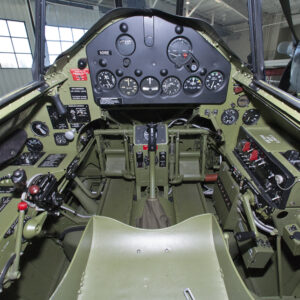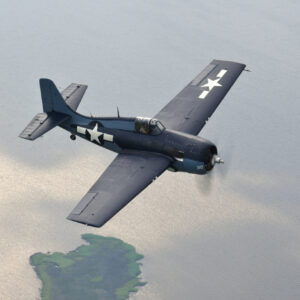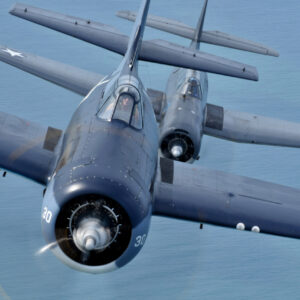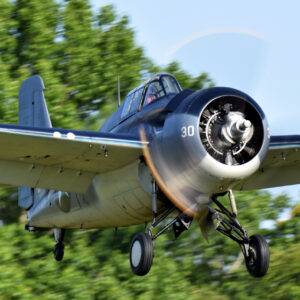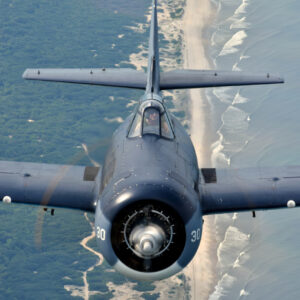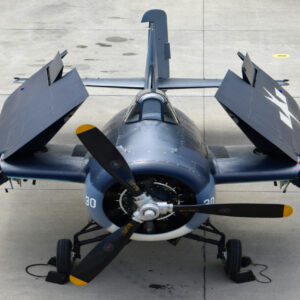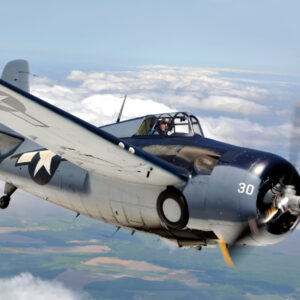The Grumman F4F would serve in many major WWII battles, including Coral Sea and Midway, where carrier-based Wildcats would provide fighter cover for Dauntlesses and Devastators. Land-based Wildcats would play a major role in the 1942 – 1943 campaign for Guadalcanal.
Derived from the Grumman-built F4F-4, the FM-2 Wildcat was manufactured by General Motors and featured several design improvements including a modified tail, more powerful engine (Wright Cyclone R-1820-56) and reduced number of in-wing guns to allow for the carriage of additional ammunition.
General Motors would continue to work to produce and improve upon the Wildcat even after Grumman itself had switched over to manufacturing the more advanced F6F Hellcat. The Museum’s FM-2 received its first assignment to San Pedro, California in April 1944, having been built just a short time earlier at the General Motors Eastern Aircraft Division plant in Linden, New Jersey. It was then assigned to the South Pacific during the summer of 1944, before returning to San Diego and eventually becoming part of a training unit in Florida. In July 1945, a short time before the end of the war, the airplane was assigned to Naval Auxiliary Air Station Pungo in Virginia Beach, just 4 miles north of the Museum!
NAAS Pungo: Also known as NOLF Pungo, due to its origin as an outlying landing field for aircraft training at Norfolk, Pungo’s mission was to support operations and training of composite squadrons, many of which would operate from smaller escort carriers in the Atlantic. The missions of these squadrons were to protect convoys, and to hunt and destroy U-Boats.
A total of 24 squadrons would pass through Pungo during WWII with most consisting of mixtures of Wildcats and Avengers.
Did You know?
The Wildcat has hand-cranked landing gear! During the war new pilots were identified on take-off by the Wildcat wobble, as the airplane would wobble while they cranked the gear up.
Specifications
- Number Built: 7,825 Wildcats (5,837 FM variants by General Motors)
- Year Produced: 1944
- Serial Number: 47030
- Crew: (1) Pilot
- Current Pilots
Dimensions
- Length: 28 ft. 11 in.
- Wingspan: 28ft.
- Empty Weight: 5,448 lbs.
- Loaded Weight: 8,271 lbs.
- Engine: 1x Wright R-1820-56 Cyclone nine-cylinder, air-cooled, radial piston engine
- Engine Power: 1,350 hp
Performance
- Cruising Speed: 164 mph
- Max Speed: 332 mph
- Range: 900 miles
- Ceiling: 34,700 ft
- Rate of Climb: 3,650 ft./min. initial
Armament
- 4x 0.50 caliber forward firing machine guns – 2x in each wing
- Up to 2x 100 lb. bombs, 1x on each wing, or
- Up to 6x 5-inch rockets, 3x on each wing
- *MAM aircraft is unarmed

